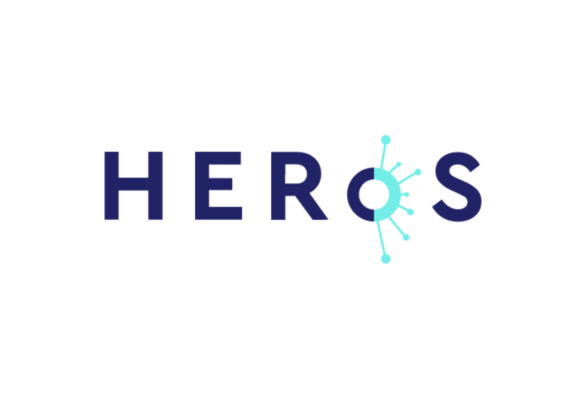
Digi-kehityspalvelut
Olemme johtava pohjoismainen sosiaali- ja terveydenhuollon digitaalisten muutosten tekijä. Asiantuntijoidemme monipuoliset taustat teknologiasta hoitotyöhön ja strategioista tutkimukseen tukevat asiakkaidemme digitaalista uudistumista ja digitaalisten prosessien tehostamista, selkeyttämistä ja laajentamista.
- Digitaalisen strategian konsultointi
- Digitaalisen arkkitehtuurin konsultointi
- Muutosprosessin suunnittelu
- Hankintapalvelut
- Digihankkeiden läpiviennin tuki

Interim CEO & Vice President, Digital transformations
Jouko Kuisma
Mielestämme digitaalisen uudistumisen tulisi perustua asiakas- ja potilaskeskeisyyteen ja pyrkiä mahdollisimman suureen vaikuttavuuteen. Samalla on lähdettävä oletuksesta, että kaikki mikä on järkevää digitalisoida, myös digitalisoidaan. Älykkään teknologian käytön tulee mahdollistaa laajamittainen, kustannusvaikuttava toiminnan muutos ja auttaa asiakkaitamme luomaan parempia hyvinvointipalveluita kaikille. Viisi keskeistä osaamisaluettamme kattavat laajasti digitaaliset muutostarpeet sosiaali- ja terveyspalveluissa.
DIGITAALISEN STRATEGIAN KONSULTOINTI
Digitaalisen strategian asiantuntijamme neuvovat asiakkaitamme entistä yhtenäisemmän ja toimivamman digitaalisuutta hyödyntävän sosiaali- ja terveyspalvelujärjestelmän rakentamisessa ja siihen liittyvien muutosten käynnistämisessä.
Autamme tunnistamaan ja ratkaisemaan merkittäviä yhteiskunnan ongelmia hyödyntämällä vaikuttavia digitaalisia toimintamalleja ja ratkaisuja. Digitaaliset muutokset suunnitellaan kokonaisvaltaisesti, palveluntuotannon tarpeista lähtien ja toiminnalliset muutokset huomioiden. Autamme suunnittelemaan, organisoimaan ja resursoimaan digitaalisen strategian toimeenpanon.
Ensisijainen asiakaskuntamme koostuu julkisista terveydenhuollon toimijoista. Työskentelemme myös terveysteknologiatoimittajien kanssa ja autamme heitä tuotekehitykseen ja markkinoihin liittyvissä kysymyksissä.
DIGITAALISEN ARKKITEHTUURIN KONSULTOINTI
Autamme asiakkaitamme luomaan yhtenäistä ICT-arkkitehtuuria päämääränä yhteentoimivuus kaikilla tasoilla, aina EU-tason lainsäädännöstä paikallisiin integraatiototeutuksiin asti. Tunnemme sosiaali- ja terveysalan syvällisesti. Ymmärrämme myös, mitä ei ole mahdollista tehdä toimialan sääntelykehyksen puitteissa.
Autamme asiakkaitamme valitsemaan oikeat arkkitehtuurimenetelmät ja -kehykset sekä tuemme näiden työkalujen käytössä, jotta yhteentoimivuus olisi saumatonta. Tunnemme hyvin toimialakohtaiset tietomallit kuten SNOMED-CT:n ja sosiaalihuollon asiakastietomallin sekä integraatiostandardit kuten HL7:n.
Pitkäaikaisiin asiakkaisiimme lukeutuu ministeriöitä, sosiaali- ja terveysministeriön hallinnonalan kansallisia viranomaisia, hyvinvointialueita ja palveluntuottajia. Teemme yhteistyötä kansainvälisten sähköisten potilastietojärjestelmien toimittajien kanssa ja autamme heitä paikallisten vaatimusten täyttämisessä.
MUUTOSPROSESSIN SUUNNITTELU
Intohimomme on saada sosiaali- ja terveysalan innovaatiot onnistumaan. Autamme liiketoimintamuutoksen systemaattisessa johtamisessa ja palvelumuotoilun menetelmin tuemme päätöksentekijöitä, terveysalan ammattilaisia, asiakkaita ja potilaita läpi muutosprosessin.
Asiantuntijoissamme yhdistyy vankka tietämys sosiaali- ja terveysalasta design-osaamiseen. Asiantuntemukseemme perustuen tunnistamme mahdollisuudet, joita oikeanlaiset teknologiat voivat tarjota asiakkaillemme. Palvelumuotoilussa hyödynnämme loppukäyttäjätutkimuksia, vaatimusanalyyseja, käytettävyysarviointeja, pilottitestejä ja kenttäkokeiluja. Teemme myös toteutettavuustutkimuksia ja pystymme mittaamaan niiden arvoa. Nämä menetelmät kuuluvat olennaisesti suuriin muutosprojekteihin, kuten sairaaloiden uudelleensuunnitteluun ja potilastietojärjestelmien uusimiseen.
Valtaosa asiakkaistamme on julkisia sosiaali- ja terveydenhuollon toimijoita. Yksityiset yritykset, kuten lääkeyhtiöt, ovat usein mukana tukemassa hankkeita.
HANKINTAPALVELUT
Autamme asiakkaitamme saamaan enemmän vastinetta rahoilleen tukemalla heidän hankintojaan mahdollisimman tehokkaasti. Teemme markkinatutkimuksia, autamme muotoilemaan hankintastrategioita ja edistämme julkisia hankintoja.
Hankinnoissa olemme erityisen perehtyneitä sosiaali- ja terveydenhuollon tietotekniikkaan ja tietojärjestelmiin, kuten asiakas- ja potilastietojärjestelmiin, sekä terveysteknologioihin, kuten lääketieteellisiin laitteisiin ja sairaaloiden teknologiaan.
Pääasiallinen asiakaskuntamme koostuu julkisista toimijoista. Konsultoimme useita Pohjoismaiden suurimpia sairaalarakennushankkeita ja toimimme neuvonantajina merkittävissä potilastietojärjestelmien hankinnoissa.
DIGIHANKKEIDEN LÄPIVIENNIN TUKI
Työskentelemme kasvavassa määrin kansainvälisissä projekteissa, joiden tavoitteena on prosessien digitalisointi uusimpien teknologioiden avulla. Näiden osalta teemme yhteistyötä valittujen teknologiatoimittajien kanssa. Erityisosaamisalueisiimme kuuluu muun muassa perusterveydenhuollon prosessien digitalisoiminen, jonka avulla mahdollistamme muutoksen kohti virtuaalisia terveydenhuollon palveluita. Digitaalisessa kotihoidossa tähtäämme saumattomaan hoitoon kotiympäristössä hyödyntämällä uusia teknologioita, kuten etäseurantaa, lääkkeiden automaattista jakelua ja tekoälyratkaisuja.
Pohjoismaissa työskentelemme pääasiassa julkisten ja yksityisten terveydenhuollon toimijoiden kanssa. Pohjoismaiden ulkopuolella ja valikoiduissa tapauksissa teemme yhteistyötä johtavien tieto- ja terveysteknologian toimittajien kanssa.
Lue lisää

Potilaan polun kartoitus pohjoismaisella tasolla tuo esiin uusia mahdollisuuksia markkinoille pääsyn nopeuttamiseksi ja hoitopolkujen optimoiseksi
Tarve: Uudet, yksilöllistetyt lääkkeet ja hoidot tulevat markkinoille tulevien vuosien aikana, minkä vuoksi lääkeyhtiöillä on tarve ymmärtää, miten ne voivat optimoida markkinoille…
Lue lisää
HERoS – Health Emergency Response in Interconnected Systems -tutkimushanke
Tarve: HERoS on Horizon 2020 -projekti, jossa tutkittiin yhteiskunnan ja terveydenhuoltojärjestelmän varautumista Covid-19 -pandemiaan, sekä siihen liittyviä kansanterveydellisiä reaktioita….
Lue lisää
Bounce -tutkimus ennustaa resilienssiä ja auttaa rintasyöpää sairastaneita naisia takaisin jaloilleen
Haaste: Rintasyövän kanssa kamppaileminen on muodostunut yhä suuremmaksi sosioekonomiseksi haasteeksi – erityisesti kehittyvissä maissa, joissa sairauden esiintyvyys on yleistynyt. Paremman…
Lue lisää